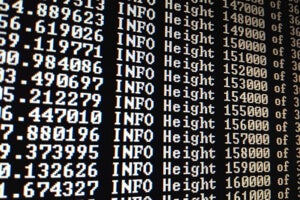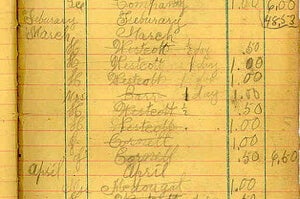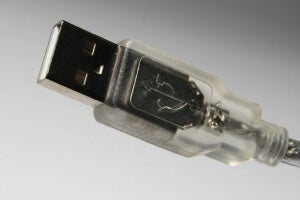Today Corrupt Officials Spend Your Money—Tomorrow Blockchain Will Stop Them

Share
Companies are integrating blockchain technology into ledgers, using it to track diamonds and ensure fair land distribution. The projects are first steps toward making governments and industries more transparent and eliminating fraud and corruption.
Honduras has had the world’s highest murder rate for years. The Transparency International organization’s Corruption Perception Index ranks Honduras 122 out of 175 countries and describes the transparency of the country’s budgets as ‘Scant to None’.
For more than eight weeks over the summer, protesters took to the streets, demanding answers and reforms in the wake of the latest corruption scandal, in which the former director of the Honduran Social Security Institute and his colleagues allegedly pocketed more than $200 million to pay for sports cars, mansions and generally lavish lifestyles.
Part of that answer might be blockchain technology.
Honduras may not seem the most likely nexus of a digitally driven revolution. But a blockchain pilot project currently underway in the Latin American country—one of a handful of similar ventures—could reshape public governance and decimate the risk of crime, fraud and corruption in governments, as well as across industries.
What Is Blockchain?
Blockchain was conceived as part of a system to track and verify transactions of the cryptocurrency bitcoin. A distributed network of computers verifies all bitcoin transactions and attaches encoded information about these transactions in blocks to a public digital ledger.
In other words, this distributed digital ledger has information on every bitcoin, including who had it before you did and who authorized moving it from one owner to another. Further, because of its massively distributed nature, it is nearly impossible to tamper with the blockchain ledger.
Which is why blockchain is becoming an incredibly diverse tool with applications beyond bitcoin.
It is possible to attach other kinds of information to the blockchain and possible to use things other than bitcoin for the transaction itself. This means blockchain can be used to securely and transparently track things like transferrals of — or changes made to — everything from documents for financial transactions to physical objects like diamonds.
The company Everledger, for example, is developing a solution to prevent insurance fraud with diamonds. Everledger includes 40 unique data points about any individual stone, along with other identifiers. Every time a stone changes hands, the ledger is updated, and if it’s reported as stolen, the ledger also records this, making it difficult for thieves to resell the stone, or for owners to file a false insurance claim and resell the stone.
Land Ledgers as a Stepping Stone
The Honduras pilot project is a joint venture between the government and Factom and Epigraph, two Texas-based companies who are collaborating on a next-generation title registry utilizing the blockchain.
The plan is to use their solution in the country’s land registry ledger system.
Today, the land registry system in Honduras is controlled and updated by government officials. The closed nature of the system means that the data are not secured and are thus susceptible to manipulation. The same applies to many similar government ledgers around the world.
This sort of setup has, for example, led to consternation in some countries over the apparently disproportionate number of current and former civil servants owning prime beachfront real estate.
With blockchain, it’s possible to make changes to public ledgers more efficiently. Meanwhile, anyone can see exactly who has authorized a given change to, for example, a land registry ledger.
“Distributed architecture, immutability and transparency are the three main attributes that allow blockchain-based apps to combat fraud and corruption,” says Abhi Dobhal, VP of Business Development at Factom. “The most well-known blockchain, the Bitcoin blockchain, is secured by more computational power than all the Google servers combined.”
Dohal describes how this makes it impossible to hack and change data. Any data or transactions secured through the blockchain are essentially “piggy backing” off the security of the Bitcoin network.

Blockchain is securely distributed across a wide network of computers. (Image: Partial map of the internet in 2005.)
“No amount of money or threats can undo what’s been done without leaving an auditable trail,” he says.
The effect of similar blockchain ledgers on governments across the world would be vast.
World Bank calculations from 2009 show that corruption, bribery, theft and tax evasion cost developing countries $1.26 trillion a year. 2014 calculations by the ONE advocacy group used a different approach, but still ended up with the figure likely being north of a trillion dollars.
Transparency International says that the $1.26 trillion could lift 1.4 billion people above the $1.25 a day income threshold for extreme poverty — for at least six years.
Be Part of the Future
Sign up to receive top stories about groundbreaking technologies and visionary thinkers from SingularityHub.


From Crime and Corruption to…Weddings?
Oscar Darmawan, CEO of Bitcoin Indonesia says he has already helped police by using blockchain technology to track transactions end-to-end, thereby identifying payments fraud.
Due to the nature of the investigations, he declines to give details, but adds that the use of blockchain in public governance and payment has the potential to create changes on a large scale.
“The prime strength of blockchain is that it is open and transparent," he says. "Deployed on a government level, it leads to possibilities of tracking any transactions a government or government official makes."
Darmawan recently used a blockchain smart contract in a slightly different way—to document his marriage.
“Vows were filed and automatically pushed into bitcoin blockchain ledger using OP_RETURN. We marked our oath down in the Bitcoin blockchain so it will be reserved for eternity,” he says.
Future Possibilities Keep Growing—But Challenges Remain
The future possible implementations of blockchain technologies are ever-expanding.
Insurance fraud systems like the one being developed by Everledger could cover almost any kind of rare artifact, and in the longer term, perhaps regular household objects.
In governments and public institutions, combating corruption with greater transparency could also be applied to politicians themselves. For example, a politician’s record of project funding, potential conflicts of interest, campaign contributions and voting record could be immediately available through a public distributed ledger.
But Oscar Darmawan thinks this future is still some ways off. He argues that the first use of blockchain in public institutions will be smart contracts, including ledgers. Later, blockchain could be used to give full transparency to payments and budgets of companies, governments and NGOs.
There are also both technical and practical issues standing in the way of blockchain.
The limit on the amount of information that can be attached to a given transaction and the number of transactions that can be made a minute are technical challenges which need to be addressed.
Practically, countries, companies, NGOs and institutions — as well as general populations — need to agree on the desired levels of transparency. For example, an NGO engaged in girls’ education in Afghanistan would be remit to give full transparency, as it might let extremists identify and target the teachers. Similar situations might arise in government settings.
The technology's speed makes these discussions all the more pertinent.
Over the last couple of years, side-chains, where the code of blockchain can be altered and further developed separately for specific projects, has accelerated development. At the same time, the Bitcoin blockchain is far from alone. Other solutions using blockchain ledger technology, like Ethereum and Pebble, are emerging.
If the current projects prove successful in diverse areas like diamond fraud and land registry ledgers, the question very quickly becomes one of how to create similar solutions in other areas — whether you are a government, an NGO, an industry like finance or an individual company.
Image Credit: Shutterstock.com; deavmi/Wikimedia Commons; peagreengirl/Flickr; The Opte Project/Wikimedia Commons; Andreas Frank/Wikimedia Commons
Marc is British, Danish, Geekish, Bookish, Sportish, and loves anything in the world that goes 'booiingg'. He is a freelance journalist and researcher living in Tokyo and writes about all things science and tech. Follow Marc on Twitter (@wokattack1).
Related Articles

How Scientists Are Growing Computers From Human Brain Cells—and Why They Want to Keep Doing It

Scientists Say We Need a Circular Space Economy to Avoid Trashing Orbit

Scientists Race to Deliver Custom Gene Therapies for Incurable Diseases in Weeks—Not Years
What we’re reading


